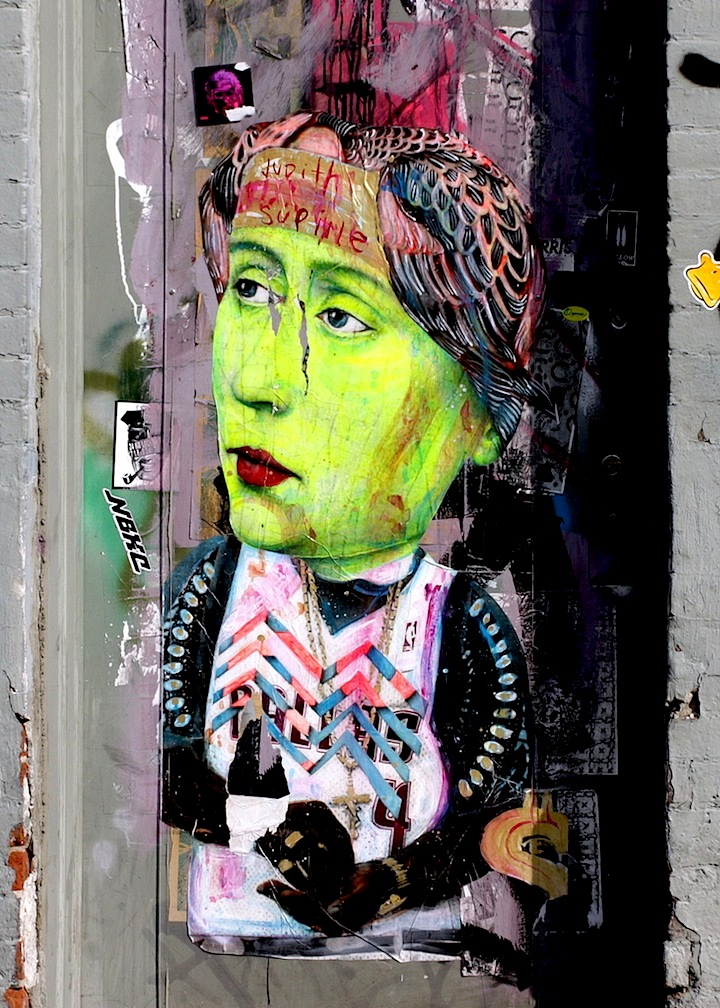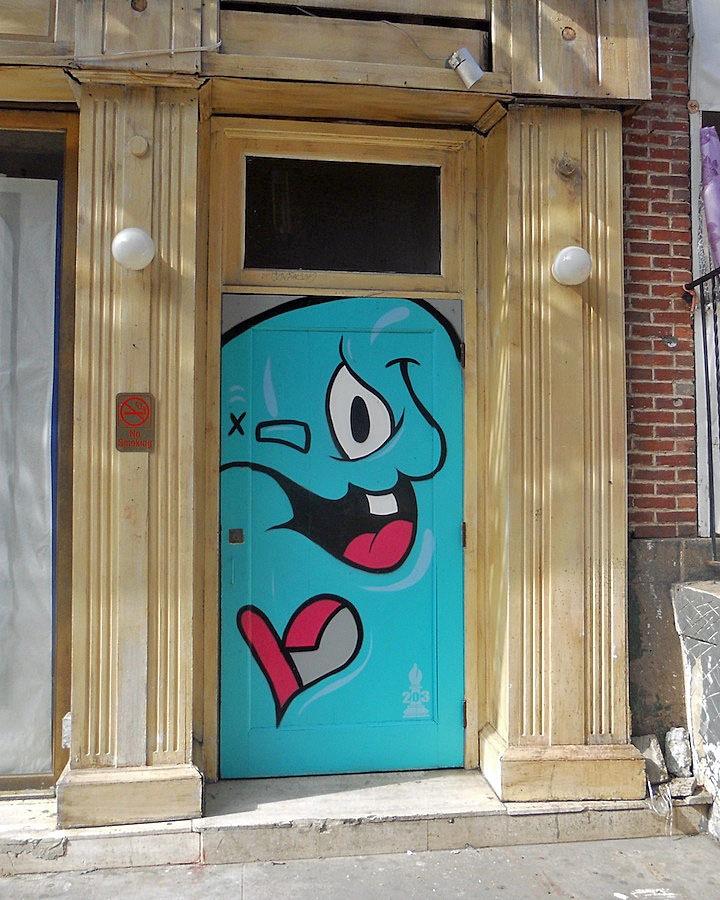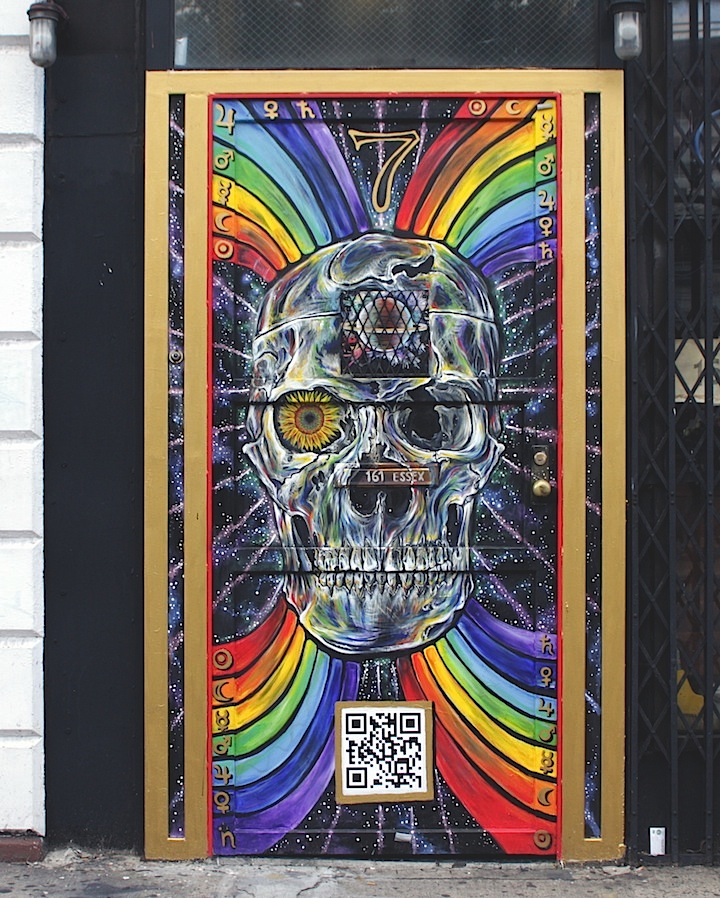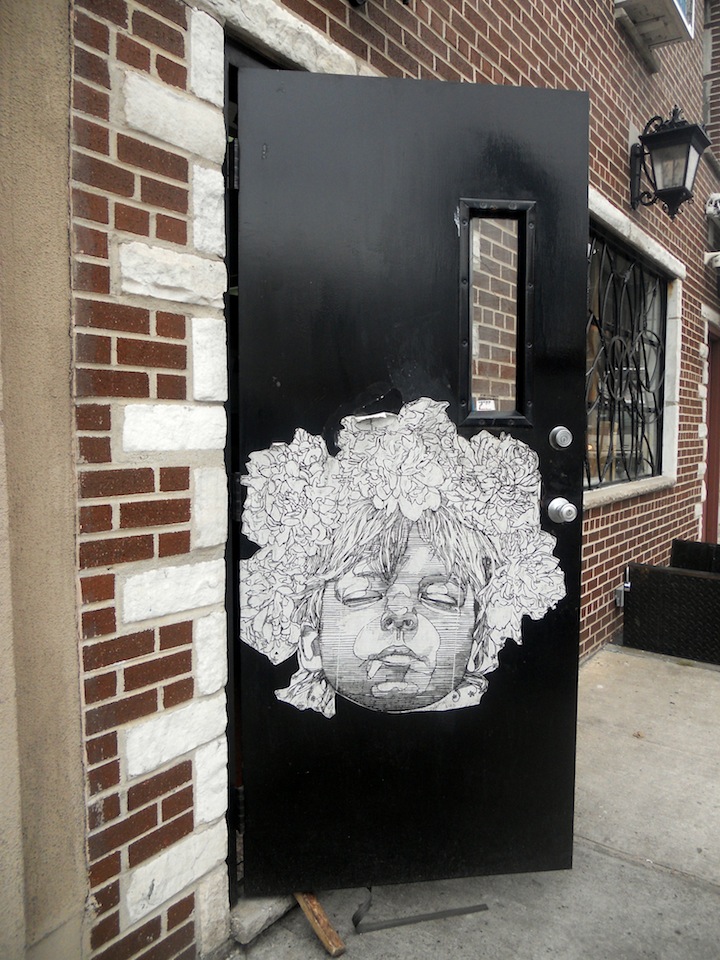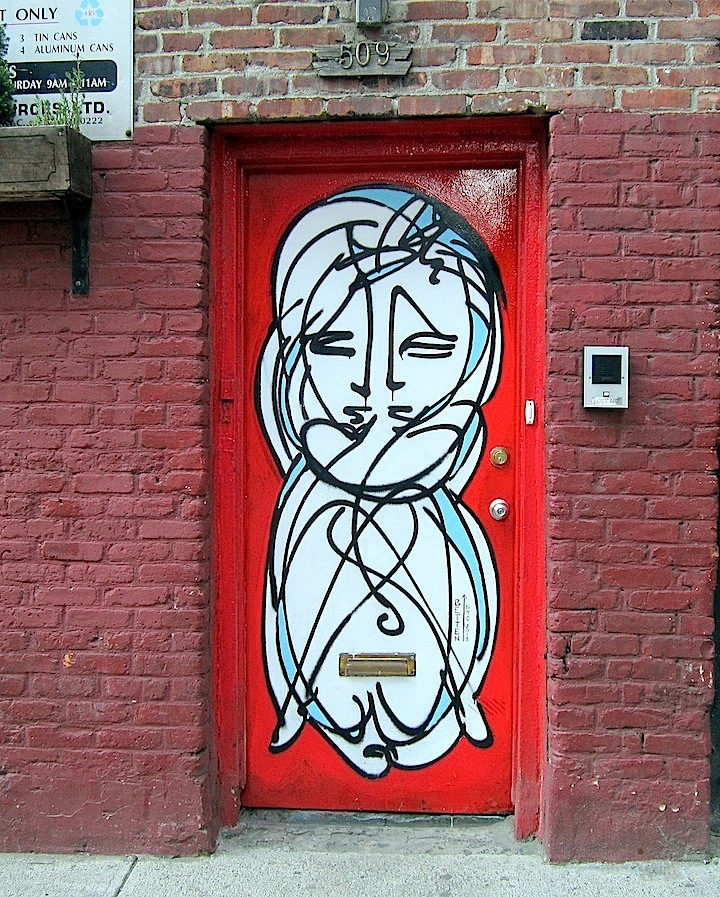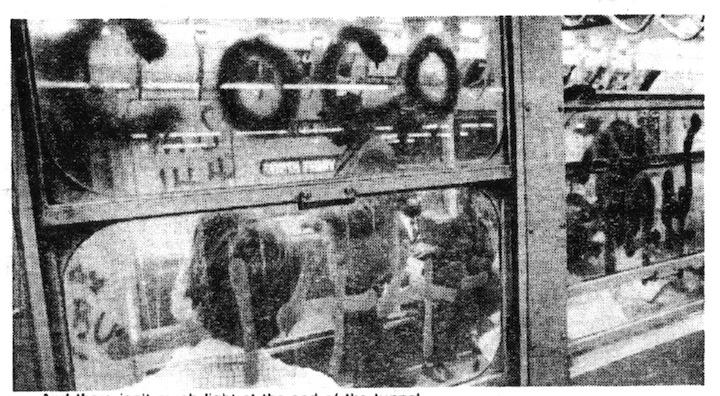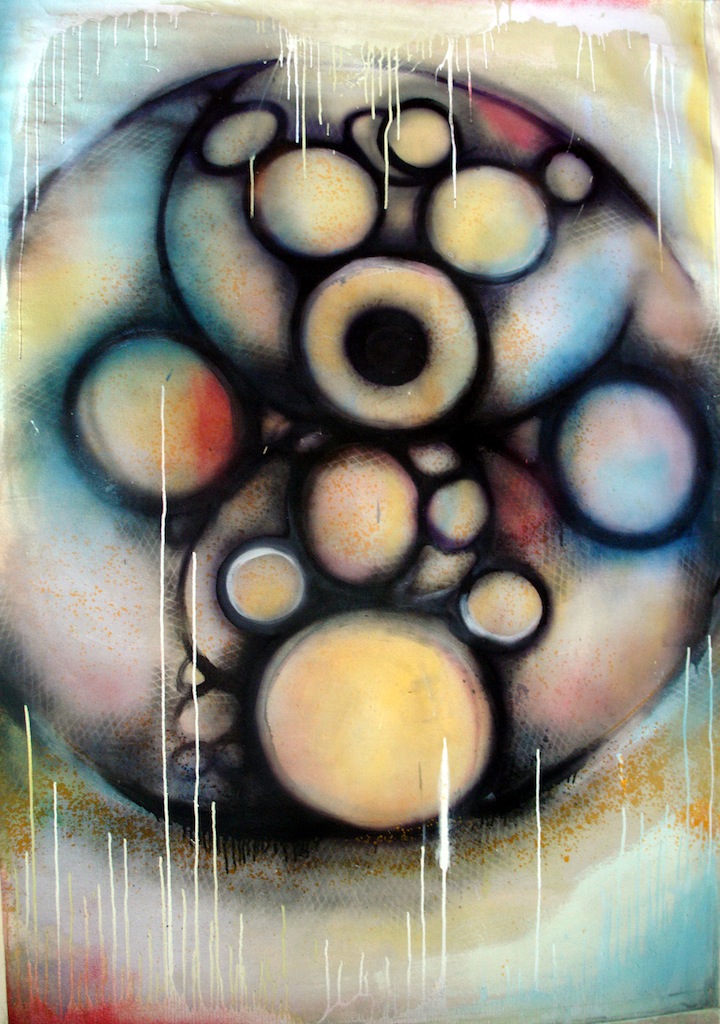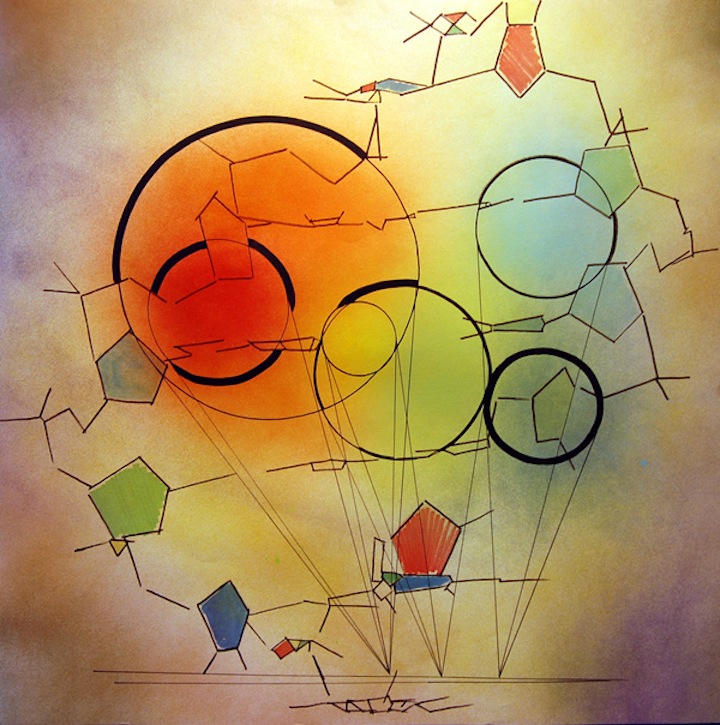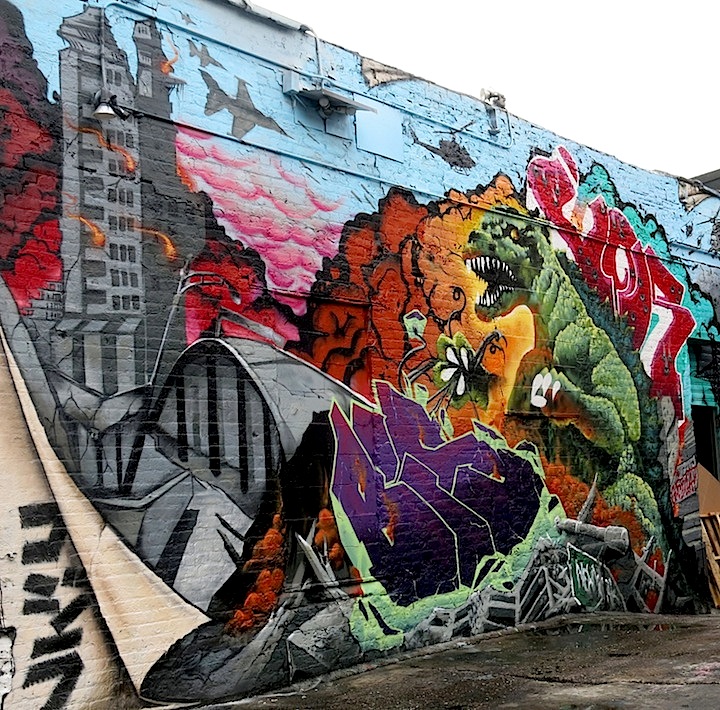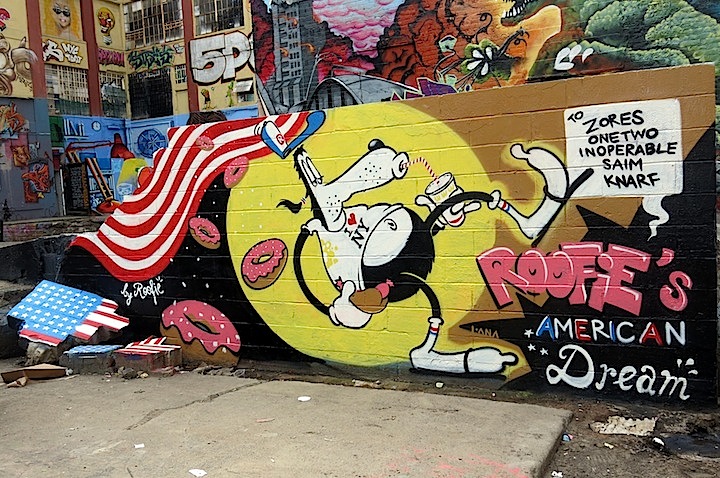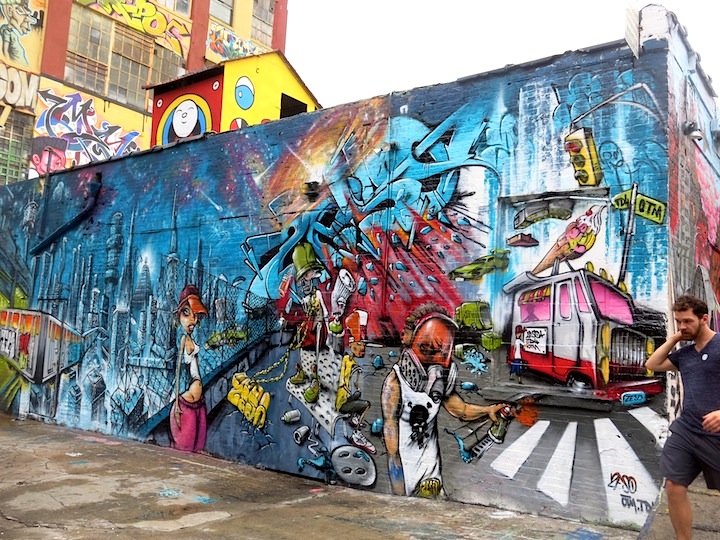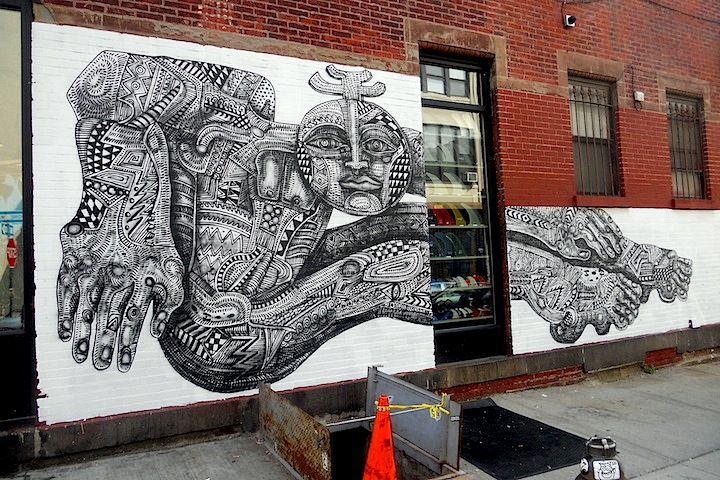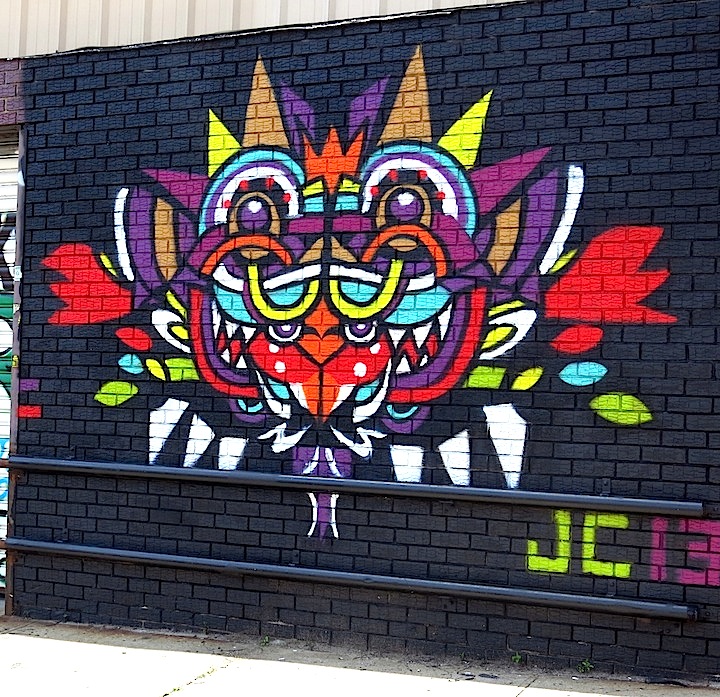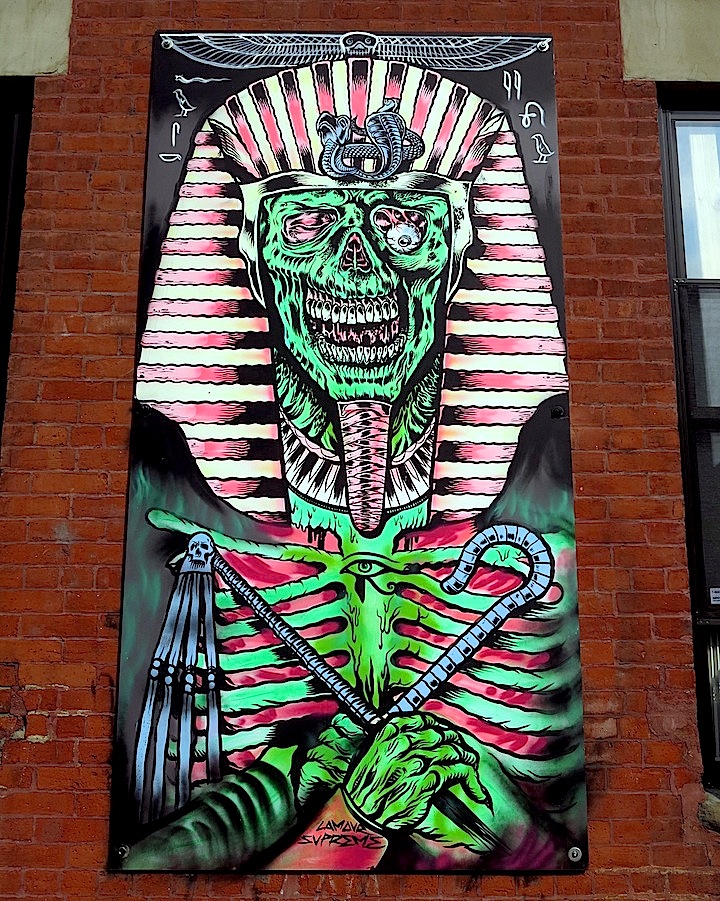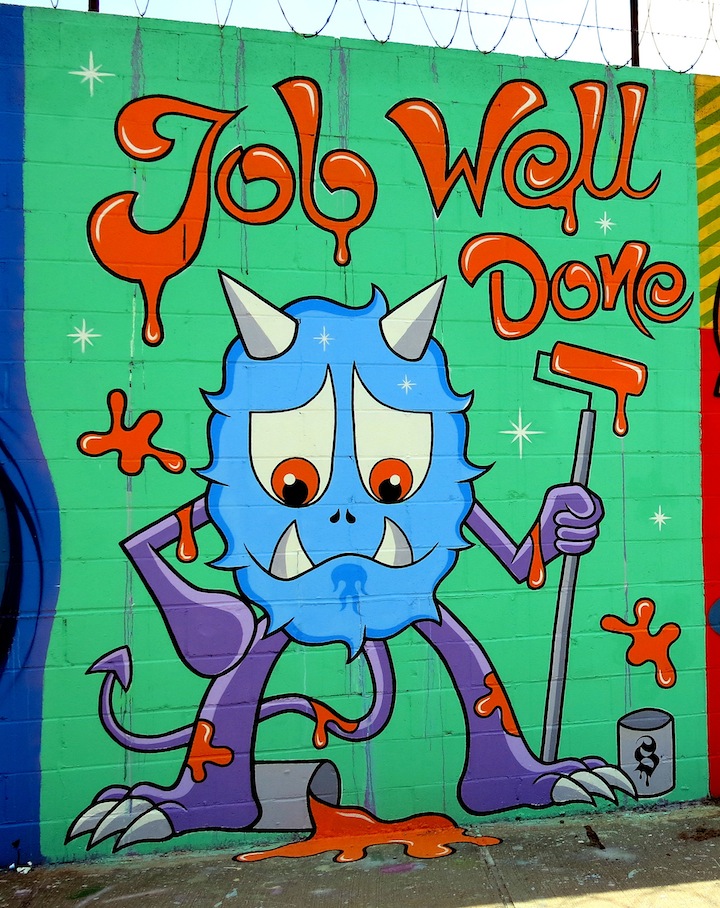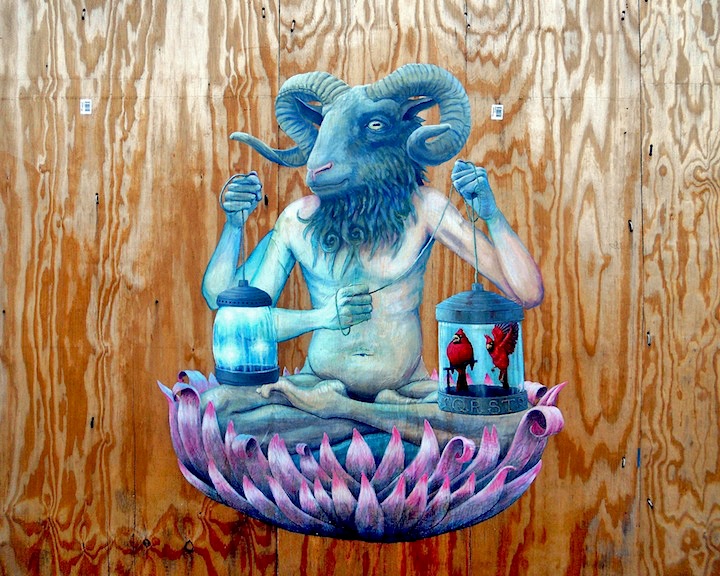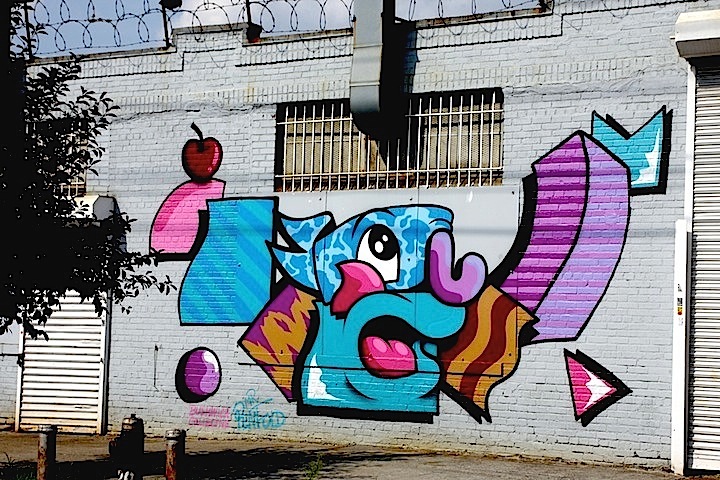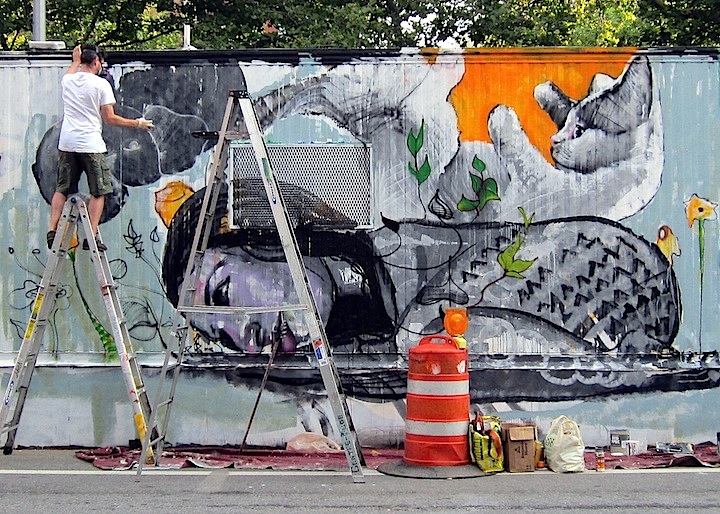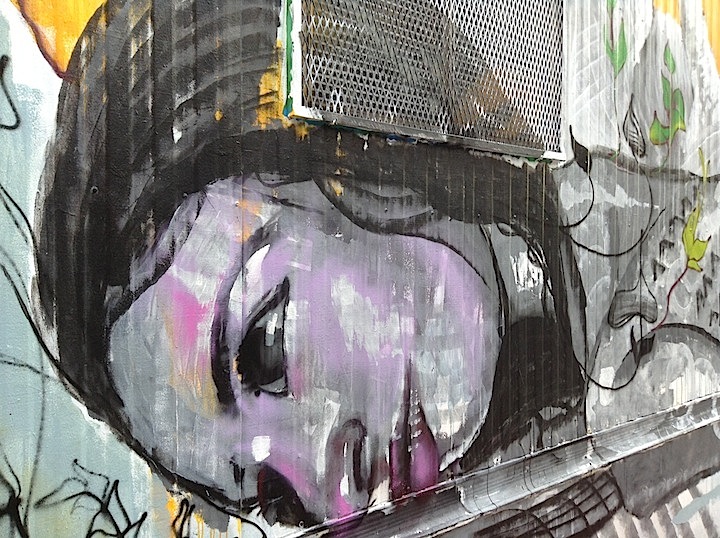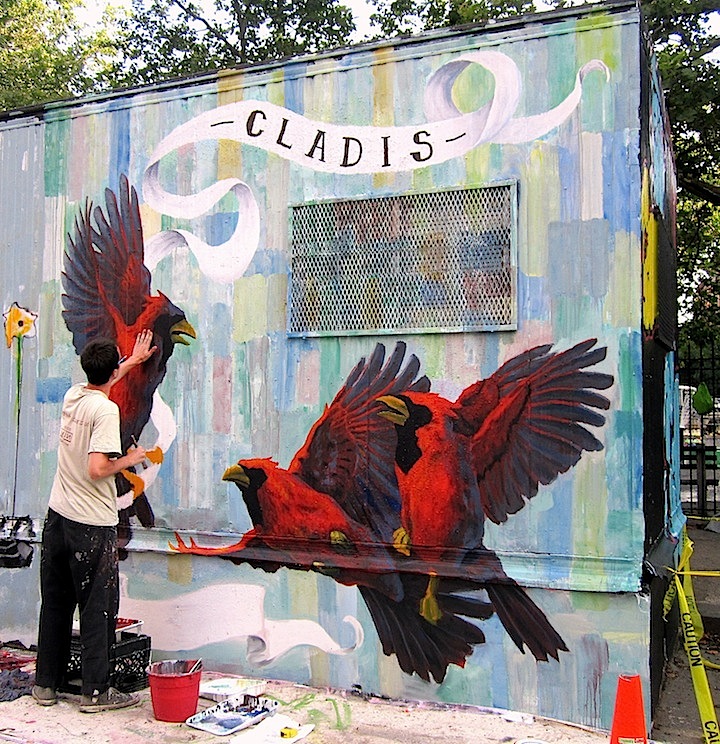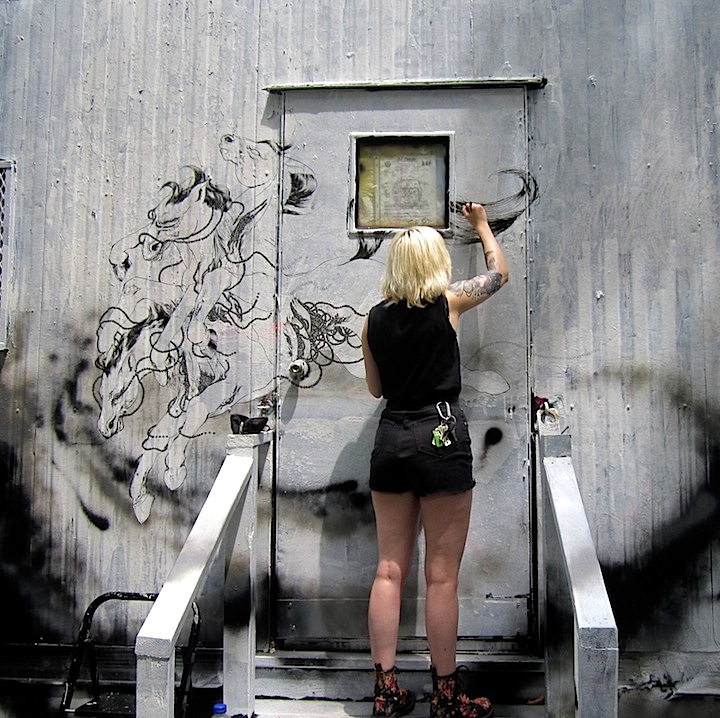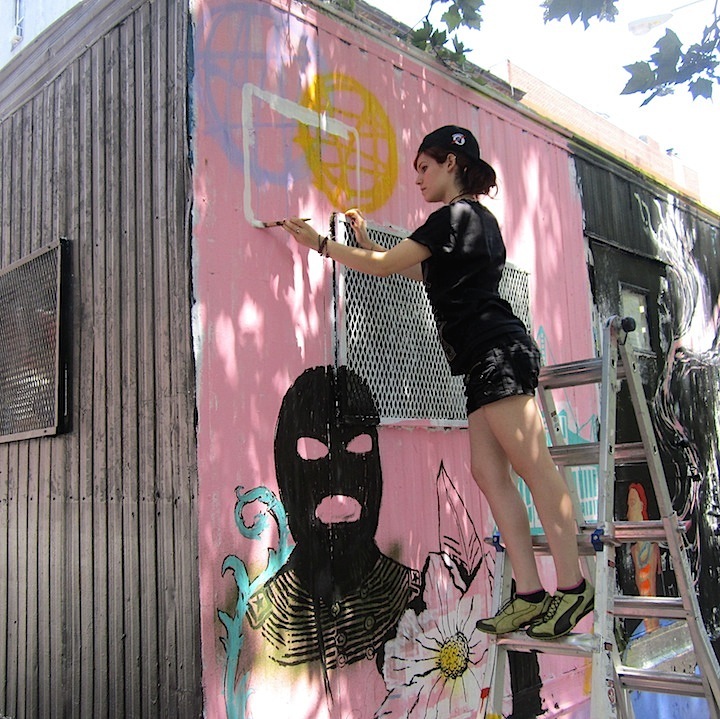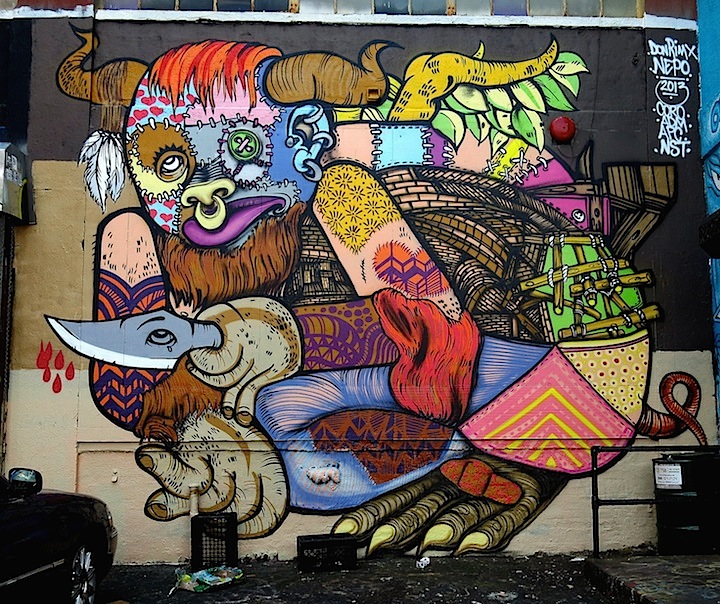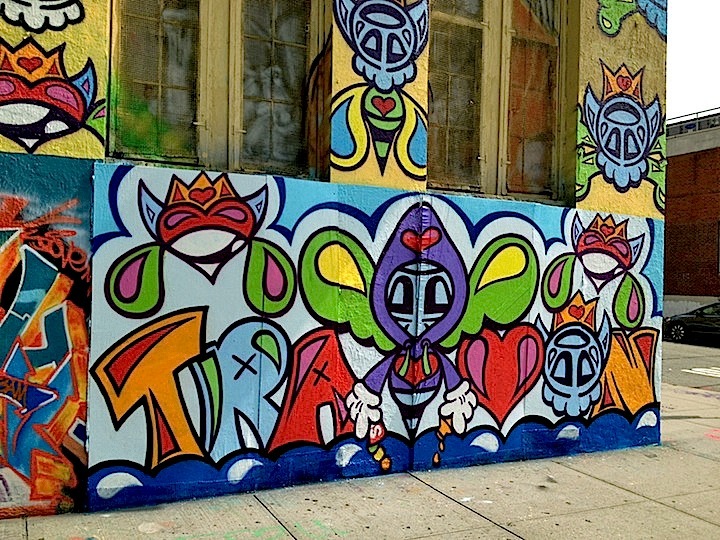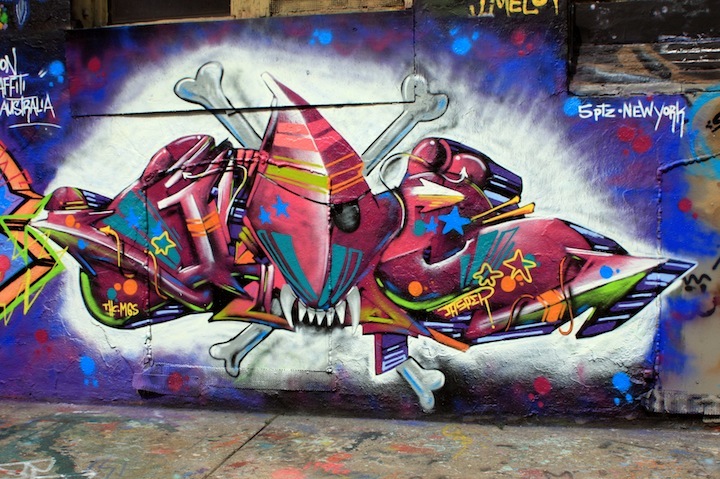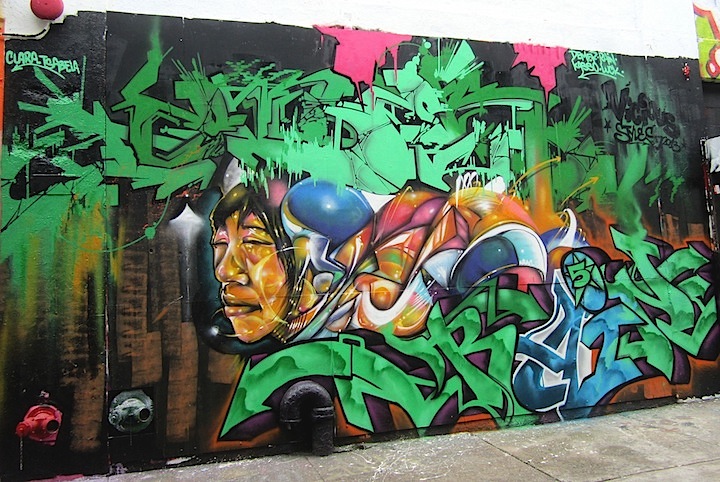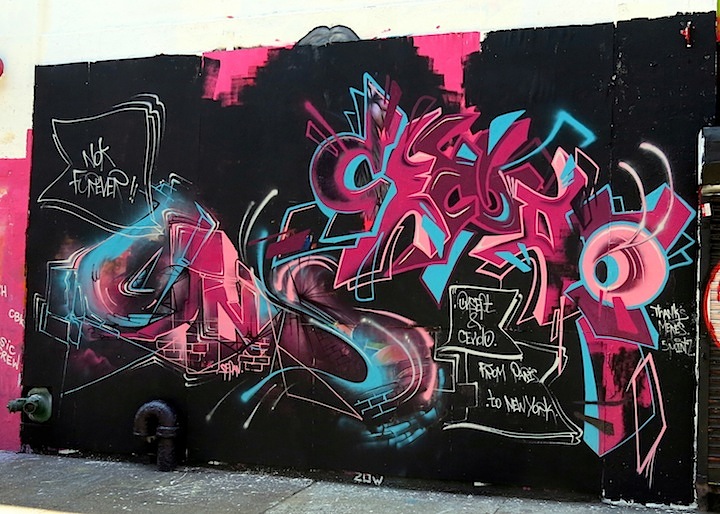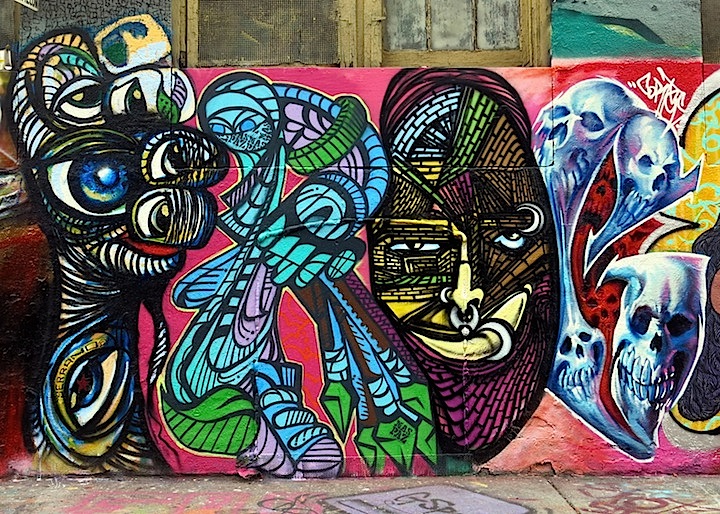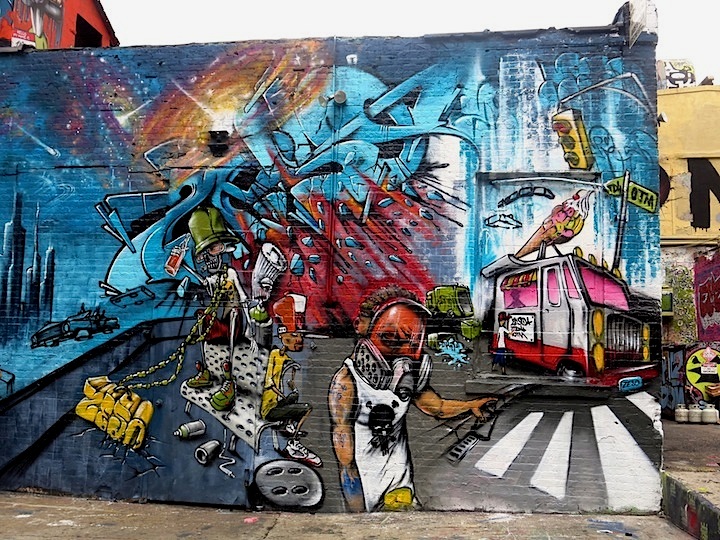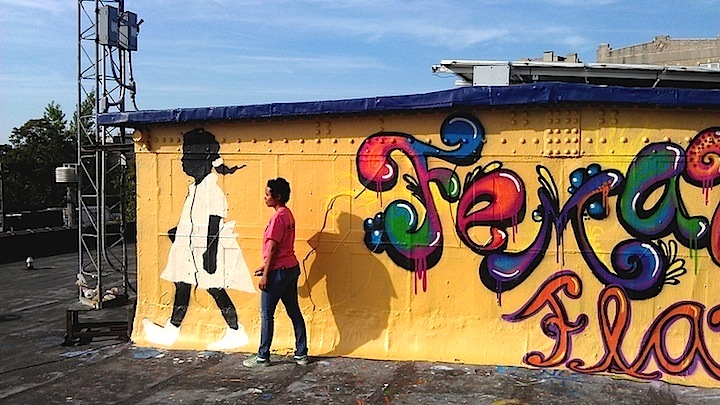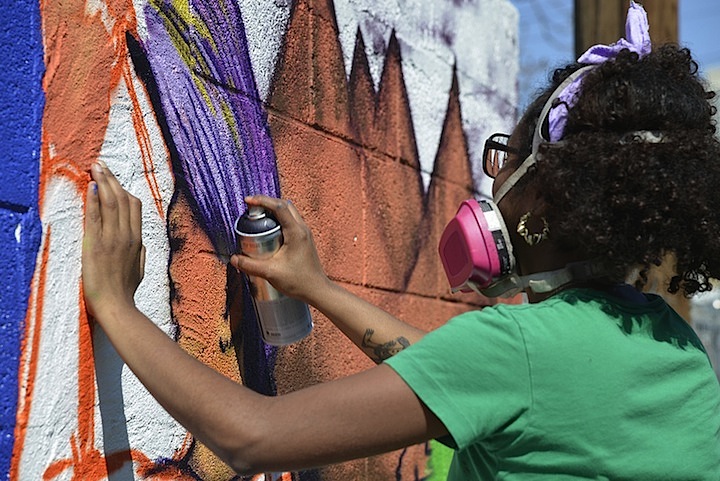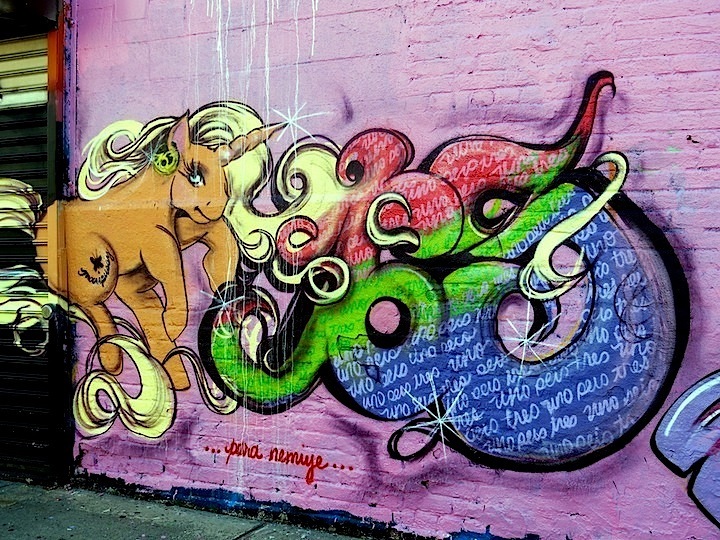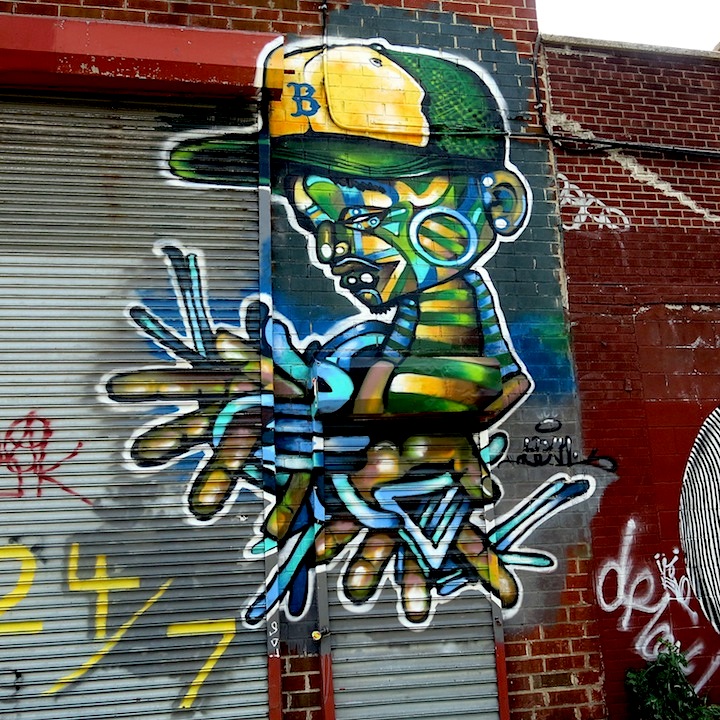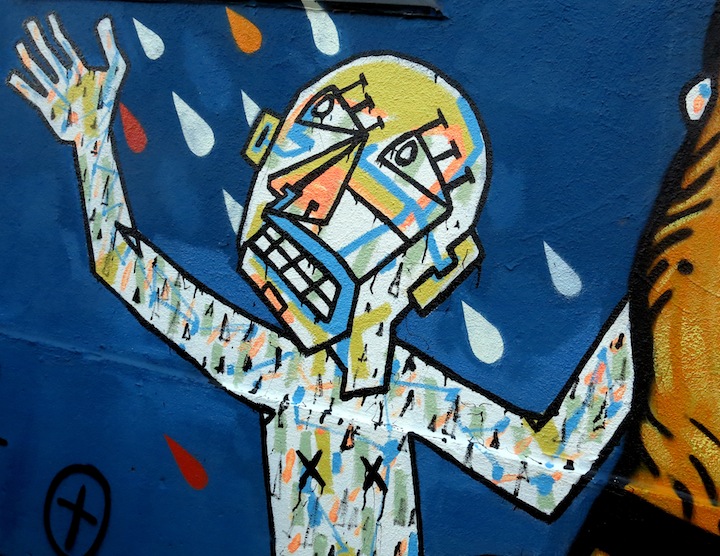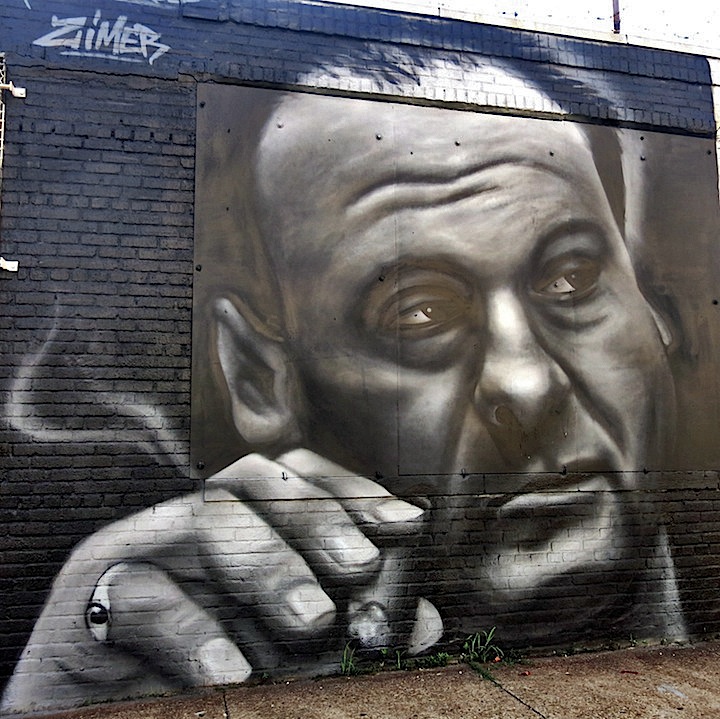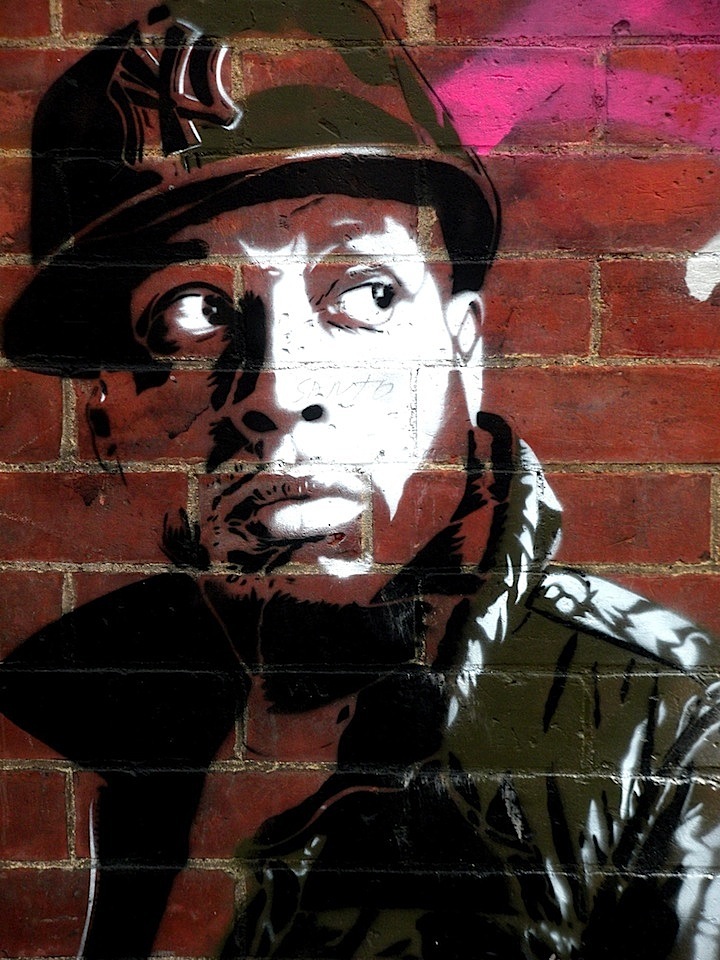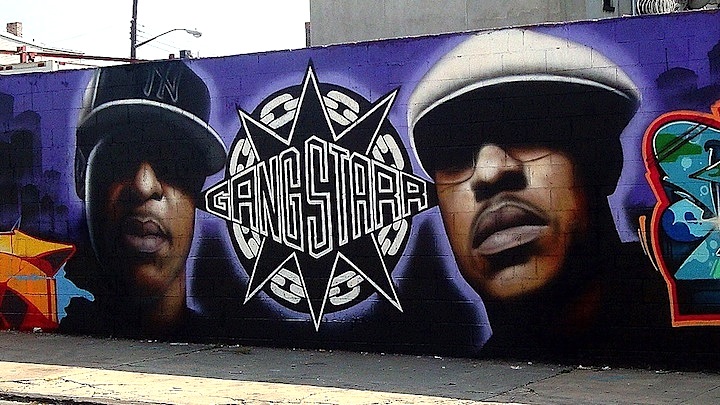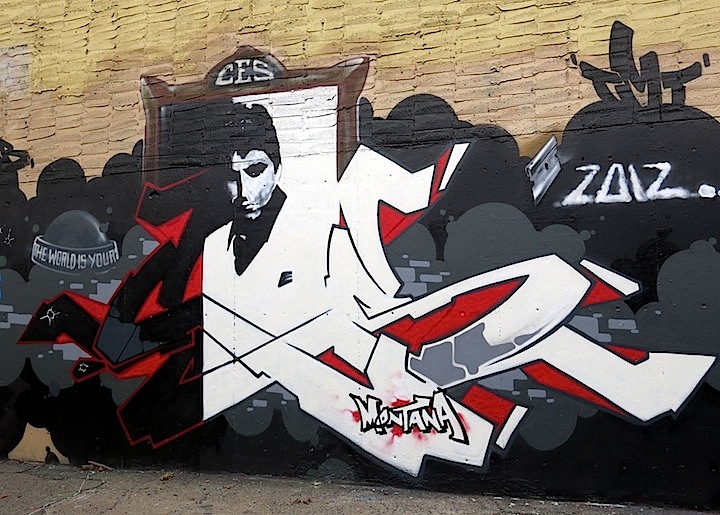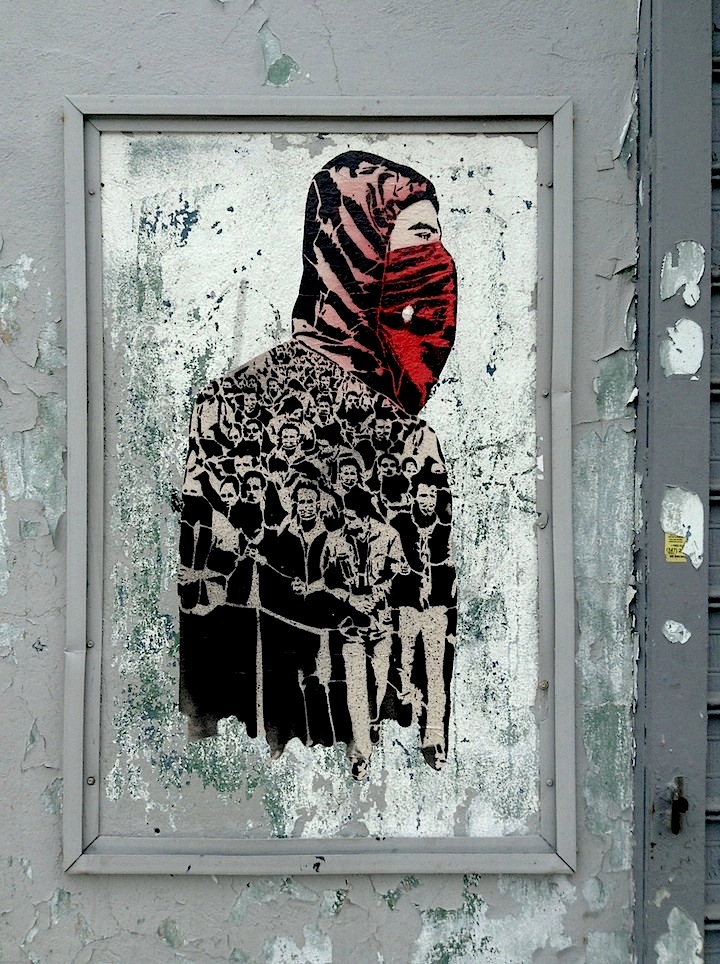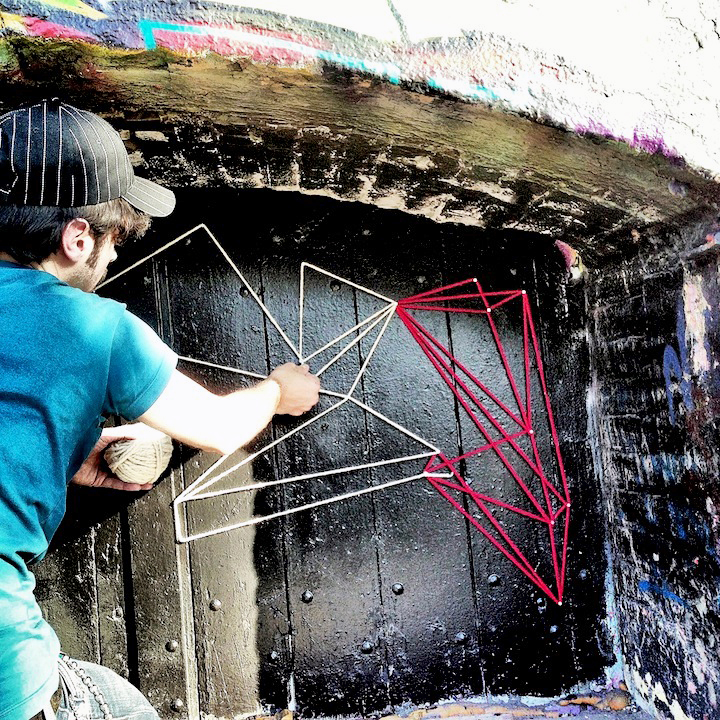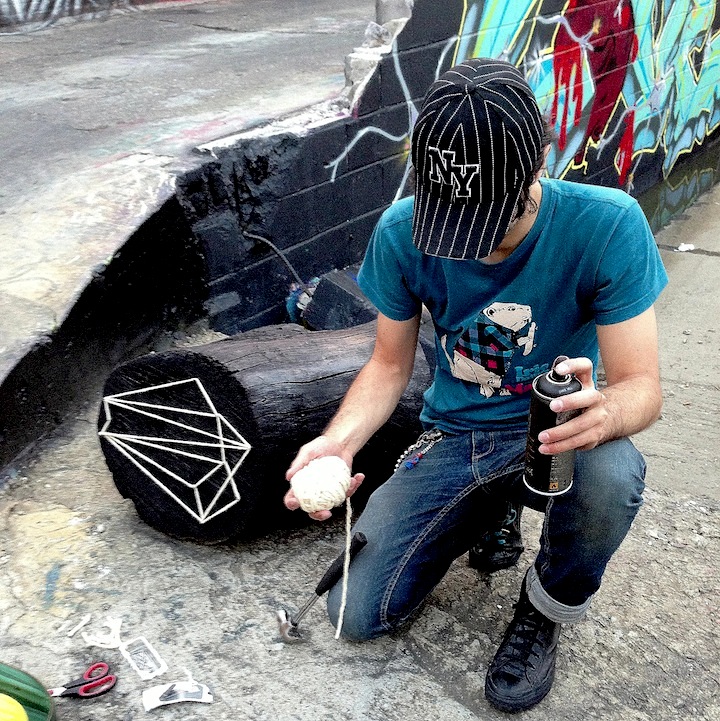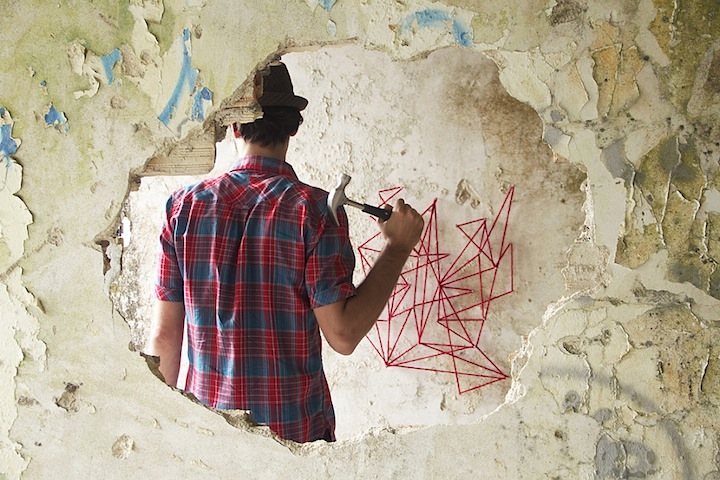Currently based in both LA and NYC, Bisco Smith is celebrated for his graffiti on walls, as well as for his audio and visual work within hip-hop culture. WORLD UPSIDE DOWN, a recent collection of this talented artist’s works, is on view at Low Brow Artique, 143 Central Avenue in Bushwick, through September 7th. We spoke with Bisco soon after his hugely successful opening:
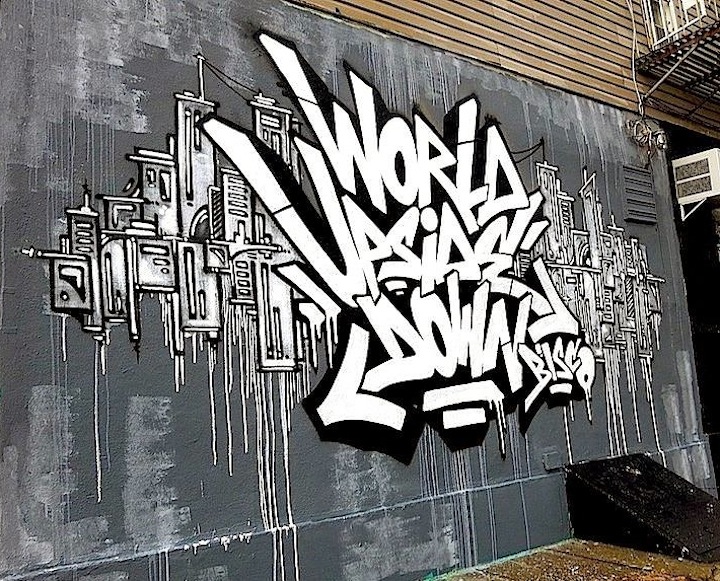
When and why did you start getting up?
I was about 12 or 13 years old when I started writing.
Any particular inspirations at the time?
I grew up skateboarding, and we were all into writing. Just about everyone in my school had a black book. We also avidly followed Chino’s Graf Flix section in the Source. This was sometime in the mid-90’s.
What was your preferred surface – back then?
Abandoned buildings. I grew up spending day after day inside of a huge dead factory. We could paint anything and everything in there.
Any early graffiti memories that stand out?
The first time I got taken down to the train tracks, a party got broken up by the police and on our escape, we ended up under a bridge filled with burners.
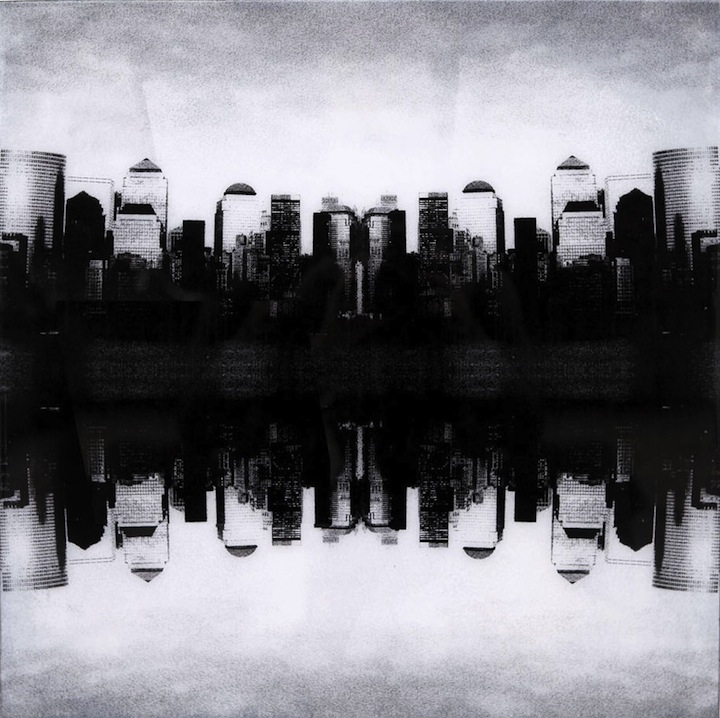
What is the riskiest thing you ever did?
Train tunnels and some less-than-solid rooftops. I remember getting caught between two trains, coming on opposite sides, while I was standing between two third rails. That experience will make you appreciate life all over again.
Why were you willing to take that risk?
I ask myself the same question now.
What percentage of your time is devoted to art these days?
Just about all of it. Both visual arts and music.
Do you have a day job? What is the main source of your income these days?
I work as a graphic designer and I mentor kids. I have a strong moral compass, and just about 98% of the work that I do is for the right cause. I’m involved with various community-based organizations including ARTS By the People, based in New York and New Jersey.
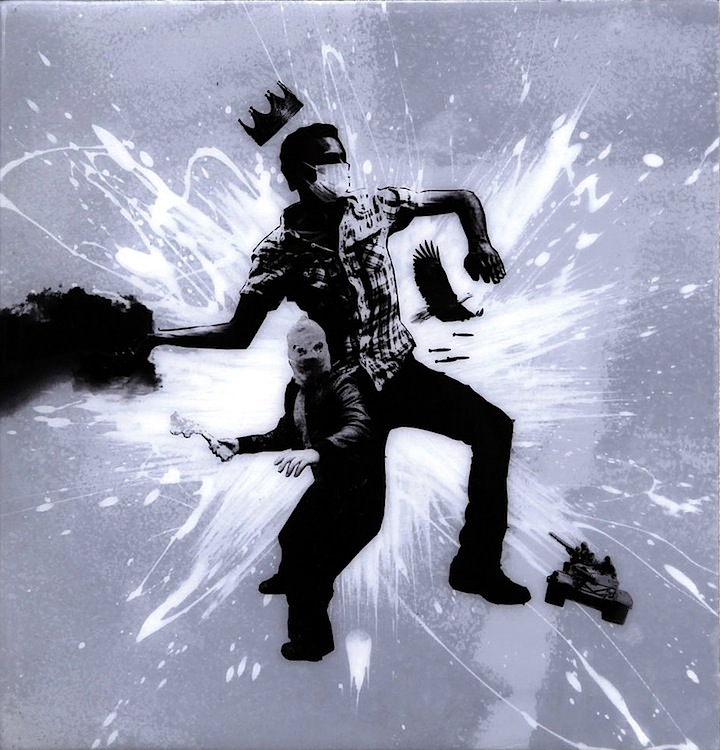
Have you any thoughts about the graffiti/street art divide?
Graffiti has a code, street rules, that “street art” doesn’t have – and that’s one of the reasons for the tensions between the two. But I don’t think there’s enough respect on either side.
How do you feel about the movement of graffiti and street art into galleries?
I think it’s great when people can make a living doing what they love – and also impact others.
Would you rather work alone or collaborate with others?
When I’m working on walls, I prefer to collaborate. More often than not, I paint with my friends and crew mates: Leias, Bishop203 or Meres
Is there anyone in particular with whom you would like to collaborate?
Jackson Pollock – if he were alive.
Any favorite graff artists?
Ces. Since Videograf 8 dropped, that whole 90’s era in the Bronx really was my favorite.
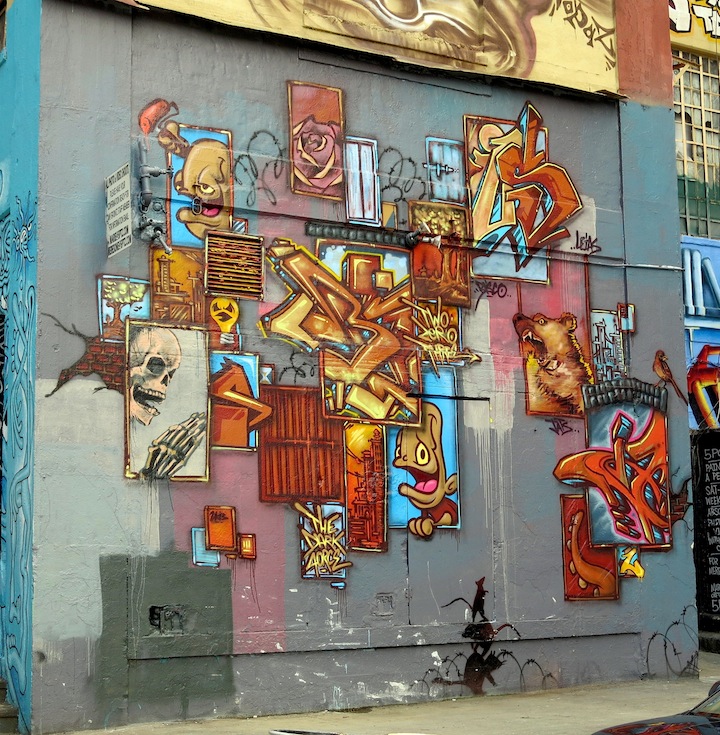
Do you have a formal art education?
Yes. I studied communication design at Pratt.
Was it worthwhile?
Very much so. It taught me a trade. There’s work in graphic design.
How do you feel about the role of the Internet in all this?
Both positive and negative. I love the connections and opportunities, but miss when style was localized
What inspires you these days?
Lately, I have been heavy on instagram and tumblr checking out other artists, working artists.
Are there any particular cultures that have influenced your aesthetic?
Hip-hop culture for sure.
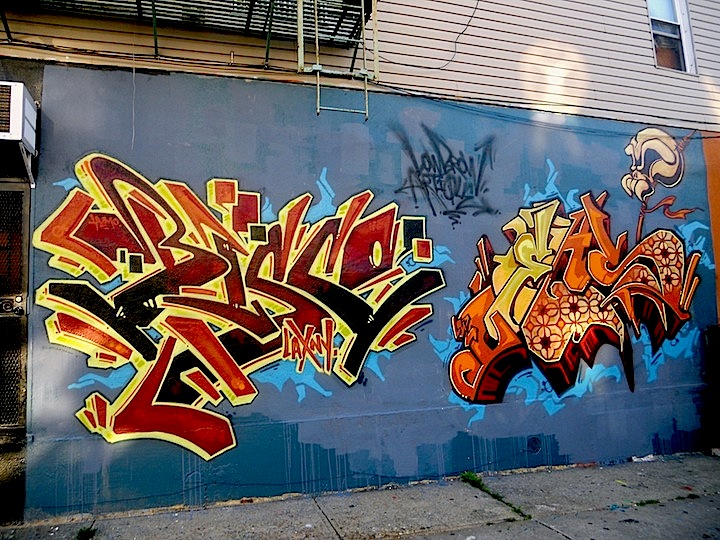
Do you work with a sketch-in-hand or just let it flow?
I let it flow.
Are you generally satisfied with your finished piece?
For the most part, but in the end — for me — it’s more about the day and the moment. The end result is a bonus.
How has your work evolved through the years?
Although I continue to work on the streets, I no longer need its framework to create. I think my artwork is more focused these days – especially if I know it’s headed to a gallery.
What do you see as the role of the artist in society?
Balance out the mundane, as well as make people think.
What about the role of the photographer? The blogger?
It is important to document what’s out there and happening. I think its essential to any movement.

Any thoughts about sanctioned vs. unsanctioned art?
I like them both. I think both are needed and both allow for their own outcomes and impacts.
The Europeans seem to appreciate and respect graffiti far more than we do here in the States? Any thoughts about that?
If it doesn’t make money here, society seems to not appreciate it.
What’s ahead?
More visual explorations, socially engaged work, and gallery exhibits.
Interview by Lois Stavsky. Photos: 1. Bisco on exterior of Low Brow Artique, photo by Lois Stavsky; 2. & 3. Bisco in WORLD UPSIDE DOWN, photos courtesy of the artist; 4. Bisco, Meres, Bishop203 & Leias at 5Pointz, photo by Lois Stavsky; 5. Bisco & Leias on exterior of Low Brow Artique, photo by Tara Murray and 6. Bisco in Watts, photo courtesy of the artist
